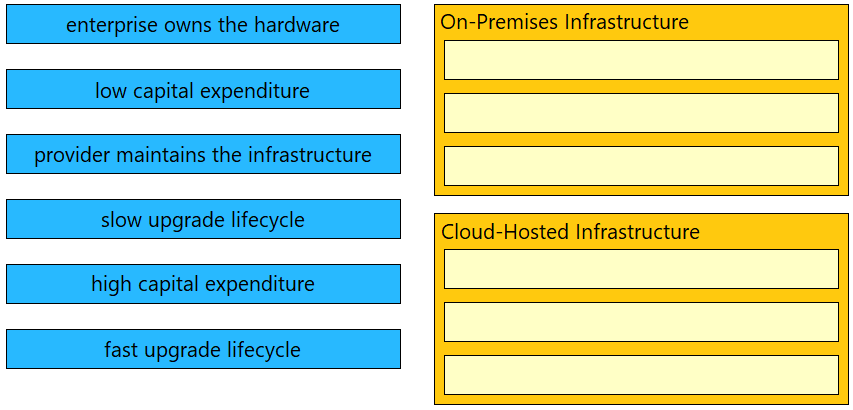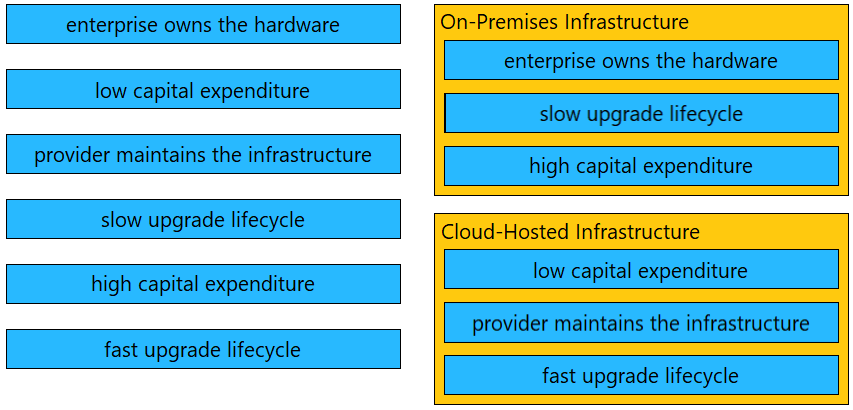What is the role of the vSmart controller in a Cisco SD-WAN environment?
B
When a wired client connects to an edge switch in a Cisco SD-Access fabric, which component decides whether the client has access to the network?
B
Which benefit is offered by a cloud infrastructure deployment but is lacking in an on-premises deployment?
D
Which action is the vSmart controller responsible for in a Cisco SD-WAN deployment?
C
Where is radio resource management performed in a Cisco SD-Access wireless solution?
B
DRAG DROP -
Drag and drop the characteristics from the left onto the infrastructure types on the right.
Select and Place:

How does the RIB differ from the FIB?
C
Which technology is used to provide Layer 2 and Layer 3 logical networks in the Cisco SD-Access architecture?
D
What is the difference between CEF and process switching?
C
What are two considerations when using SSO as a network redundancy feature? (Choose two.)
AC